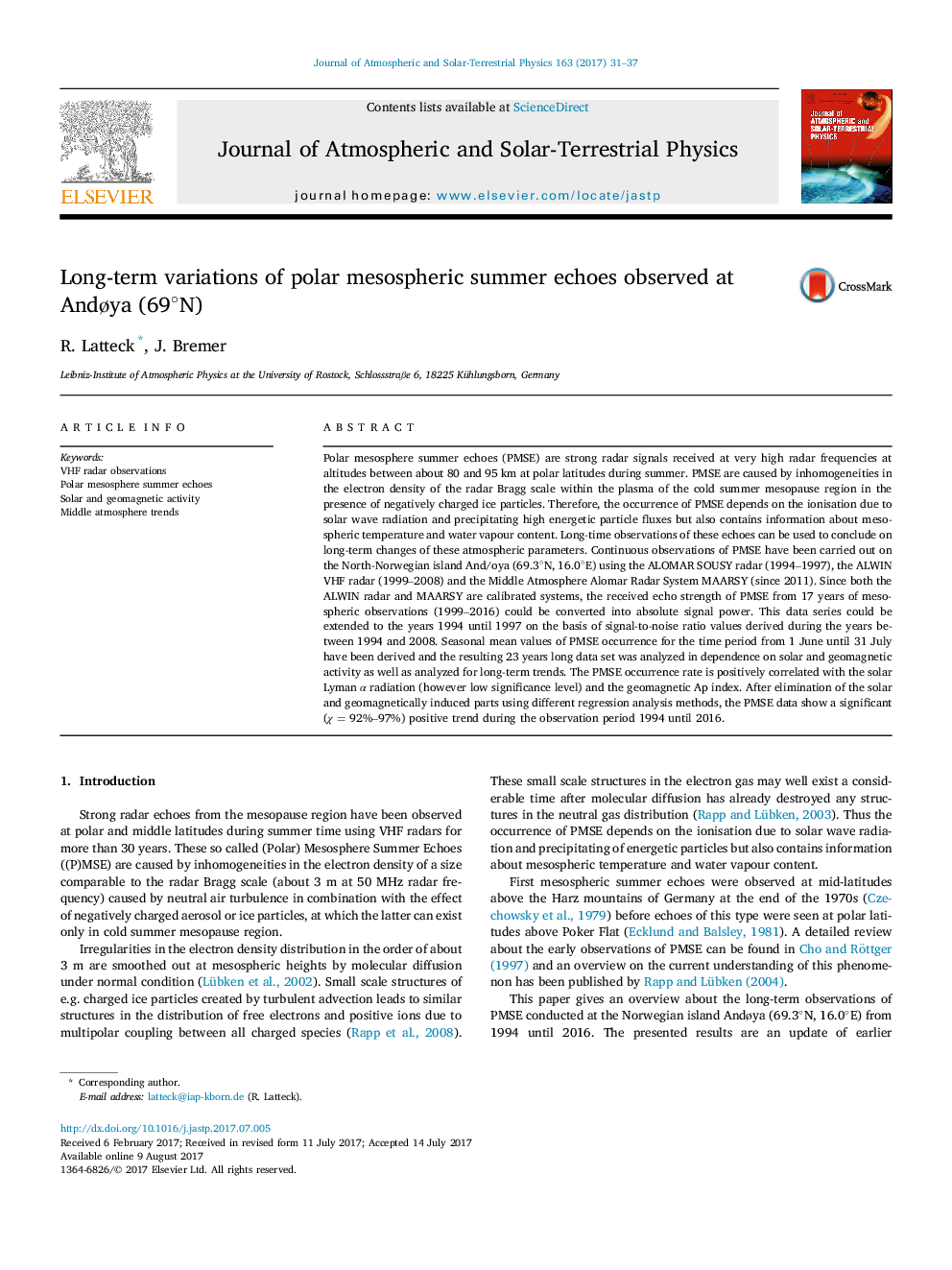| کد مقاله | کد نشریه | سال انتشار | مقاله انگلیسی | نسخه تمام متن |
|---|---|---|---|---|
| 5487544 | 1523587 | 2017 | 7 صفحه PDF | دانلود رایگان |

- PMSE from 21 years of radar observations have been investigated for seasonal and diurnal variation and long-term changes.
- The mean daily occurrence rate for the PMSE core period at Andoya is up to 100% if the full sensitivity of MAARSY is used.
- The PMSE occurrence frequencies show positive trends of about 0.3%/yr with high significance levels up to 97%.
Polar mesosphere summer echoes (PMSE) are strong radar signals received at very high radar frequencies at altitudes between about 80 and 95 km at polar latitudes during summer. PMSE are caused by inhomogeneities in the electron density of the radar Bragg scale within the plasma of the cold summer mesopause region in the presence of negatively charged ice particles. Therefore, the occurrence of PMSE depends on the ionisation due to solar wave radiation and precipitating high energetic particle fluxes but also contains information about mesospheric temperature and water vapour content. Long-time observations of these echoes can be used to conclude on long-term changes of these atmospheric parameters. Continuous observations of PMSE have been carried out on the North-Norwegian island And/oya (69.3°N, 16.0°E) using the ALOMAR SOUSY radar (1994-1997), the ALWIN VHF radar (1999-2008) and the Middle Atmosphere Alomar Radar System MAARSY (since 2011). Since both the ALWIN radar and MAARSY are calibrated systems, the received echo strength of PMSE from 17 years of mesospheric observations (1999-2016) could be converted into absolute signal power. This data series could be extended to the years 1994 until 1997 on the basis of signal-to-noise ratio values derived during the years between 1994 and 2008. Seasonal mean values of PMSE occurrence for the time period from 1 June until 31 July have been derived and the resulting 23 years long data set was analyzed in dependence on solar and geomagnetic activity as well as analyzed for long-term trends. The PMSE occurrence rate is positively correlated with the solar Lyman α radiation (however low significance level) and the geomagnetic Ap index. After elimination of the solar and geomagnetically induced parts using different regression analysis methods, the PMSE data show a significant (Ï = 92%-97%) positive trend during the observation period 1994 until 2016.
Journal: Journal of Atmospheric and Solar-Terrestrial Physics - Volume 163, October 2017, Pages 31-37